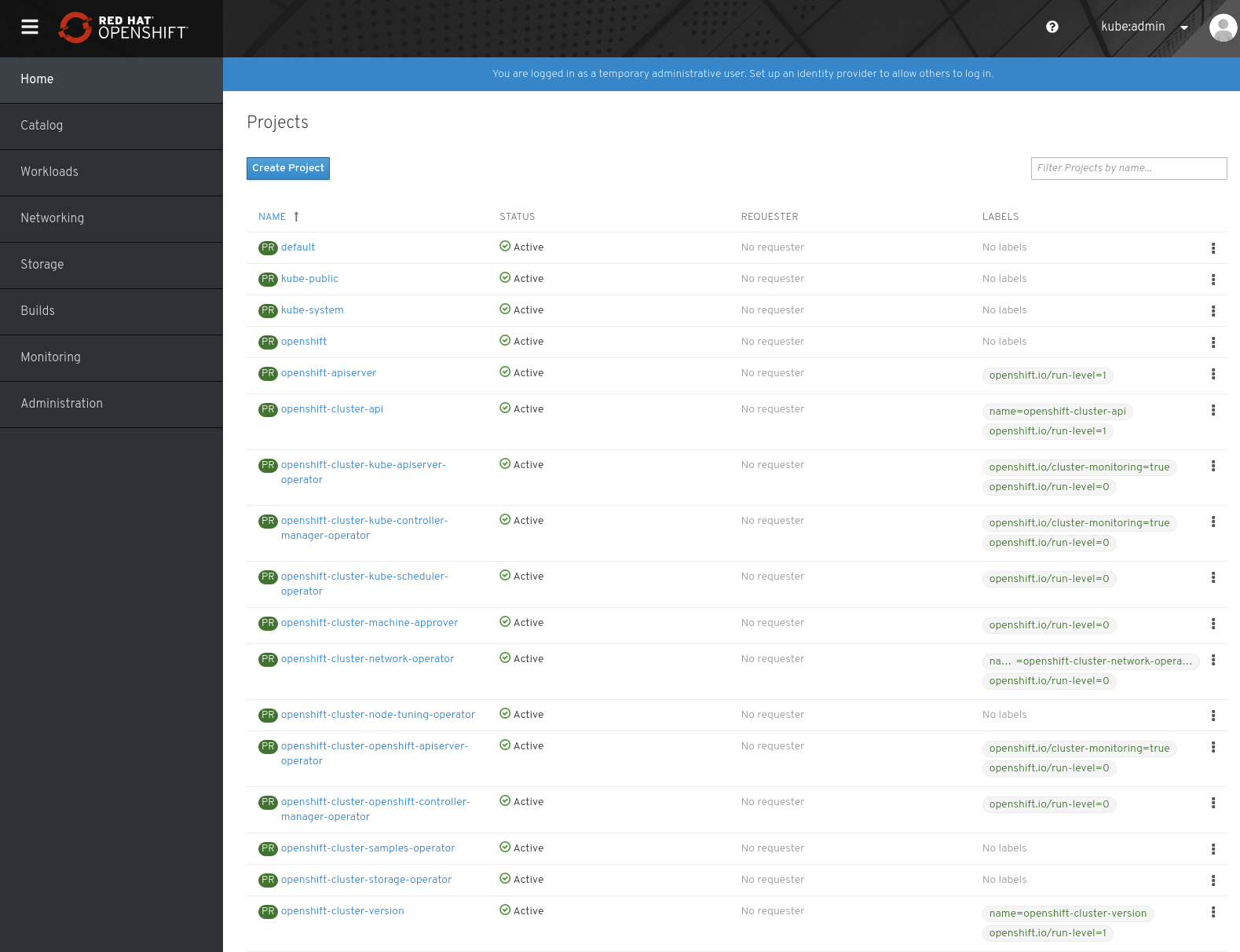github.com/openshift/installer@v1.4.17/docs/user/azure/install.md (about) 1 # Cluster Installation 2 3 At this point, you are ready to perform the OpenShift installation. See below for an example of an 4 IPI install. 5 6 ## Example: Installer-Provided Infrastructure (IPI) 7 8 The steps for performing an IPI-based install are outlined [here][cloud-install]. Following this guide you may begin at 9 Step 3: Download the Installer. 10 11 ### Create Configuration 12 13 ```console 14 [~]$ openshift-install create install-config 15 ? SSH Public Key /home/user_id/.ssh/id_rsa.pub 16 ? Platform azure 17 ? azure subscription id xxxxxxxx-xxxx-xxxx-xxxx-xxxxxxxxxxxx 18 ? azure tenant id xxxxxxxx-xxxx-xxxx-xxxx-xxxxxxxxxxxx 19 ? azure service principal client id xxxxxxxx-xxxx-xxxx-xxxx-xxxxxxxxxxxx 20 ? azure service principal client secret xxxxxxxx-xxxx-xxxx-xxxx-xxxxxxxxxxxx 21 INFO Saving user credentials to "/home/user_id/.azure/osServicePrincipal.json" 22 ? Region centralus 23 ? Base Domain example.com 24 ? Cluster Name test 25 ? Pull Secret [? for help] 26 ``` 27 28 ### Create Cluster 29 30 ```console 31 [~]$ openshift-install create cluster 32 INFO Waiting up to 30m0s for the Kubernetes API at https://api.test.example.com:6443... 33 INFO API v1.11.0+85a0623 up 34 INFO Waiting up to 30m0s for the bootstrap-complete event... 35 INFO Destroying the bootstrap resources... 36 INTO Waiting up to 30m0s for the cluster at https://api.test.example.com:6443 to initialize... 37 INFO Waiting up to 10m0s for the openshift-console route to be created... 38 INFO Install complete! 39 INFO To access the cluster as the system:admin user when using 'oc', run 40 export KUBECONFIG=/home/user/auth/kubeconfig 41 INFO Access the OpenShift web-console here: https://console-openshift-console.apps.test.example.com 42 INFO Login to the console with user: kubeadmin, password: 5char-5char-5char-5char 43 ``` 44 45 ### Running Cluster 46 47 In your subscription, there will be a new Resource Group for your cluster: 48 49  50 51 There will be six running Virtual Machines in the Resource Group. 52 53  54 55 The nodes within the Virtual Network utilize the internal DNS and use the Router and Internal API load balancers. External/Internet 56 access to the cluster use the Router and External API load balancers. 57 58 The OpenShift console is available via the kubeadmin login provided by the installer: 59 60  61 62 [cloud-install]: https://console.redhat.com/openshift/create 63 [rhcos]: https://github.com/openshift/os